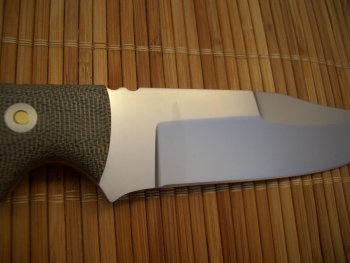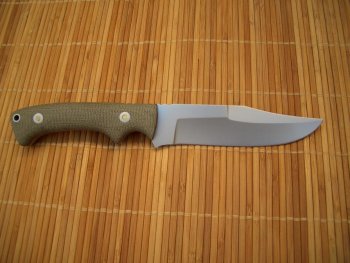G
Glenn Dirado
Guest
Hello everyone, new to the site and really like it.
I am a hobby maker. I recentley made my first batch of knives in stainless(440c) and had them profesionally heat treated. When I got to the finer grits of the finishing stage of my blade an odd stain began to appear in the steel. The best way I can describe it is it looks like a small drop of acid ran down the blade and etched the steel. It is not rough but is deep in the steel. It is still there even after removing several thousandths during the finish grind. It does not go through to the other side of the blade. Anyone know what this is? Will it compromise the strength of the blade? Thanks in advance,
Glenn
I am a hobby maker. I recentley made my first batch of knives in stainless(440c) and had them profesionally heat treated. When I got to the finer grits of the finishing stage of my blade an odd stain began to appear in the steel. The best way I can describe it is it looks like a small drop of acid ran down the blade and etched the steel. It is not rough but is deep in the steel. It is still there even after removing several thousandths during the finish grind. It does not go through to the other side of the blade. Anyone know what this is? Will it compromise the strength of the blade? Thanks in advance,
Glenn


